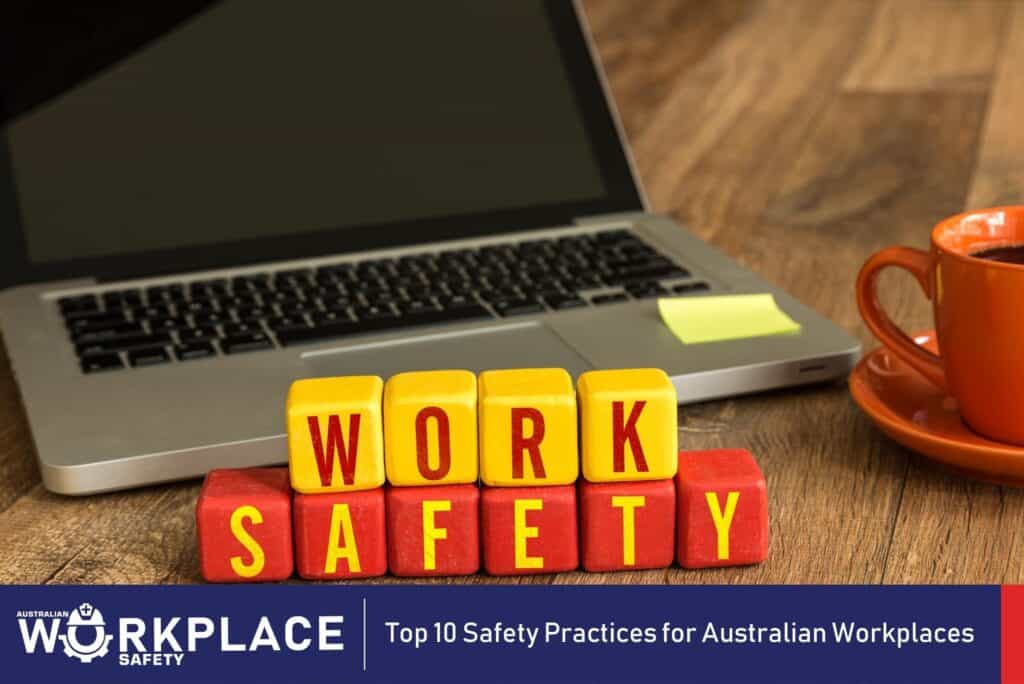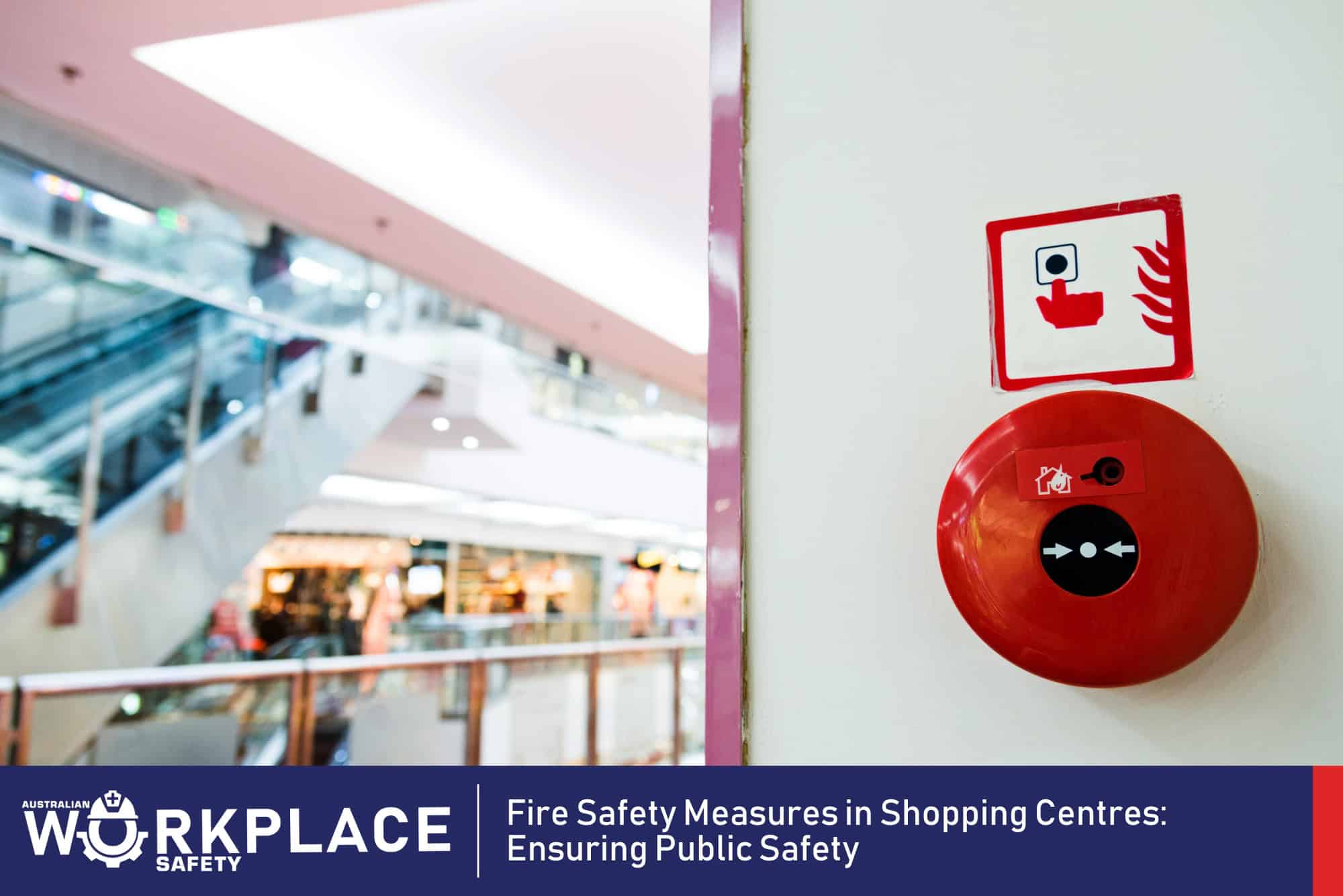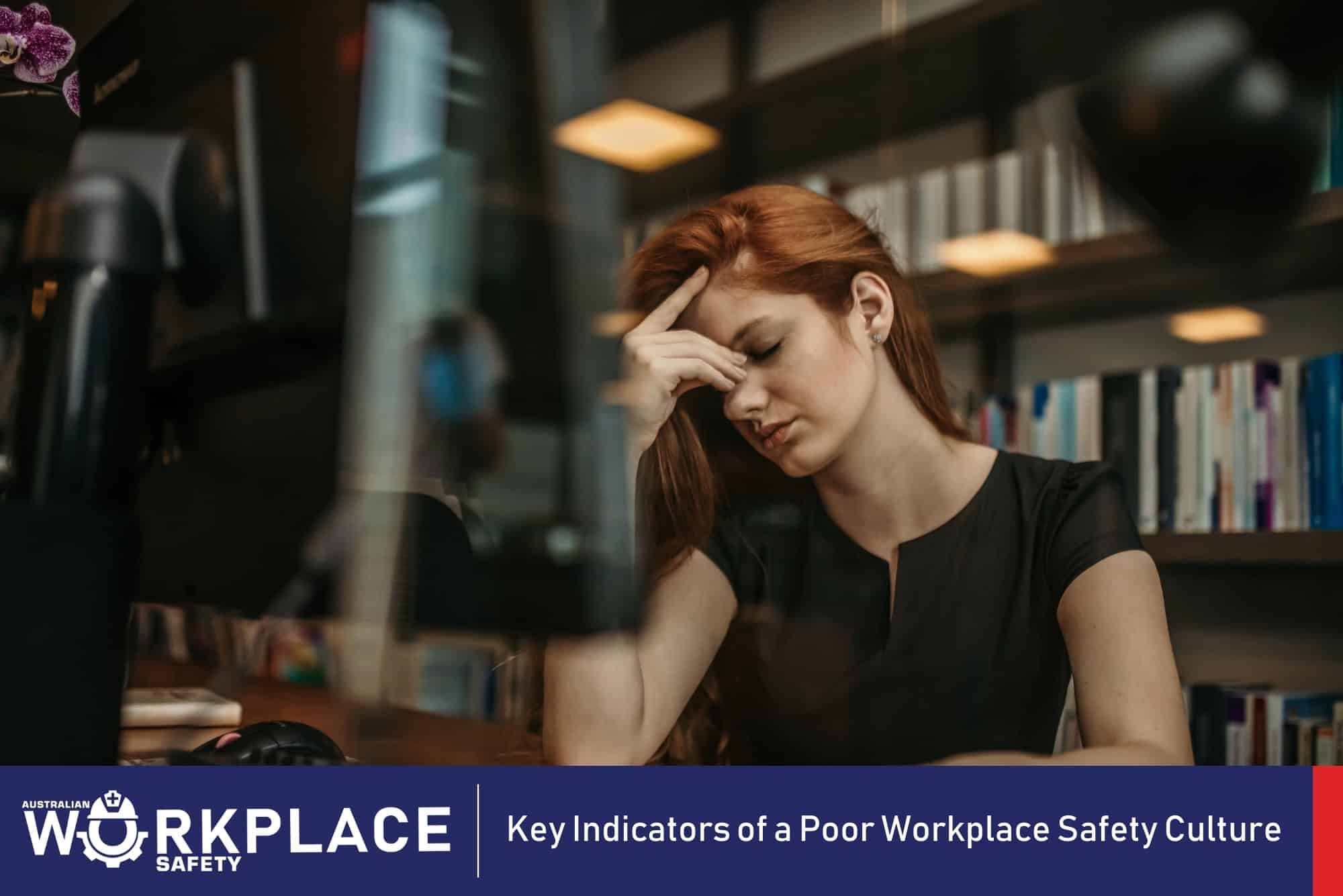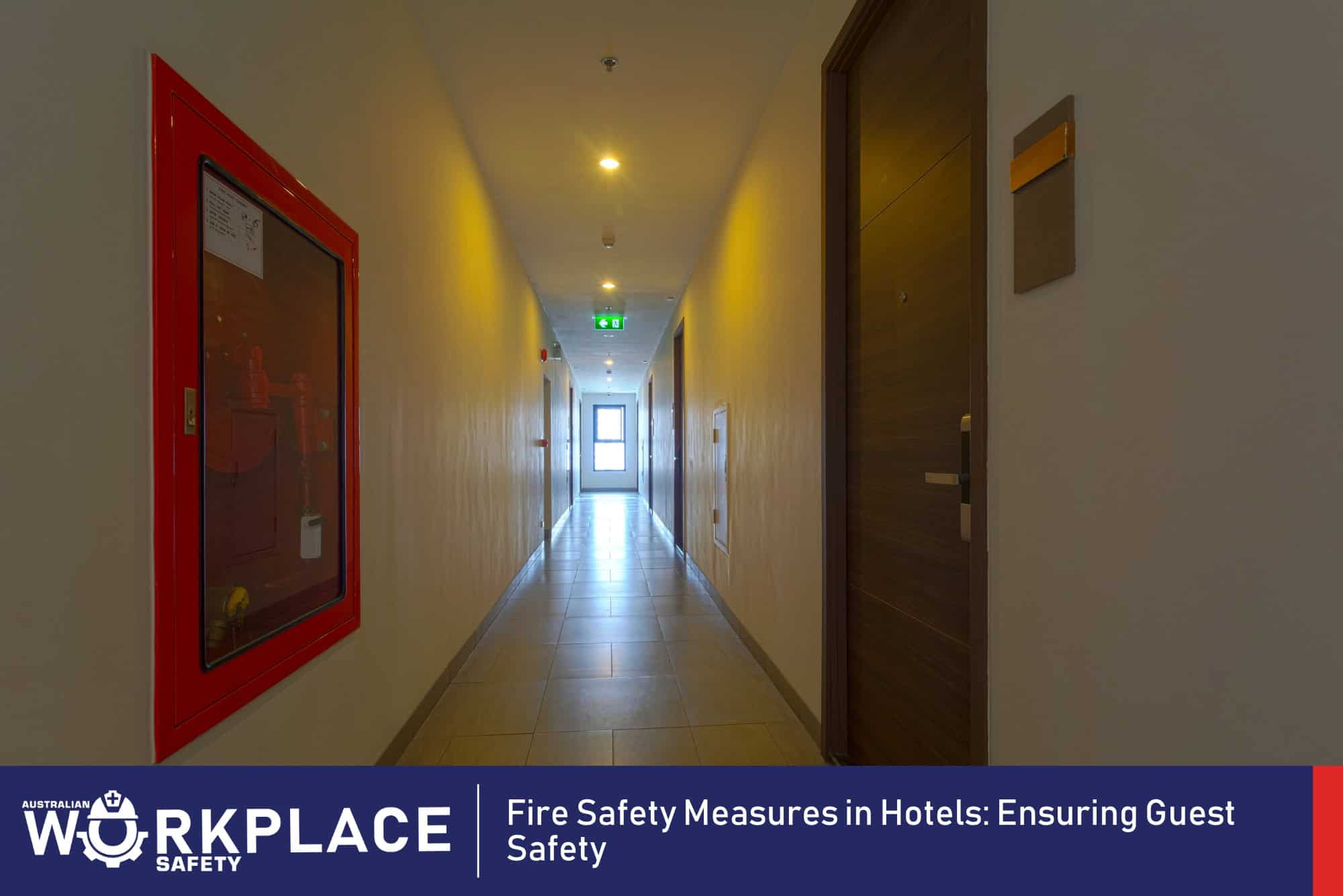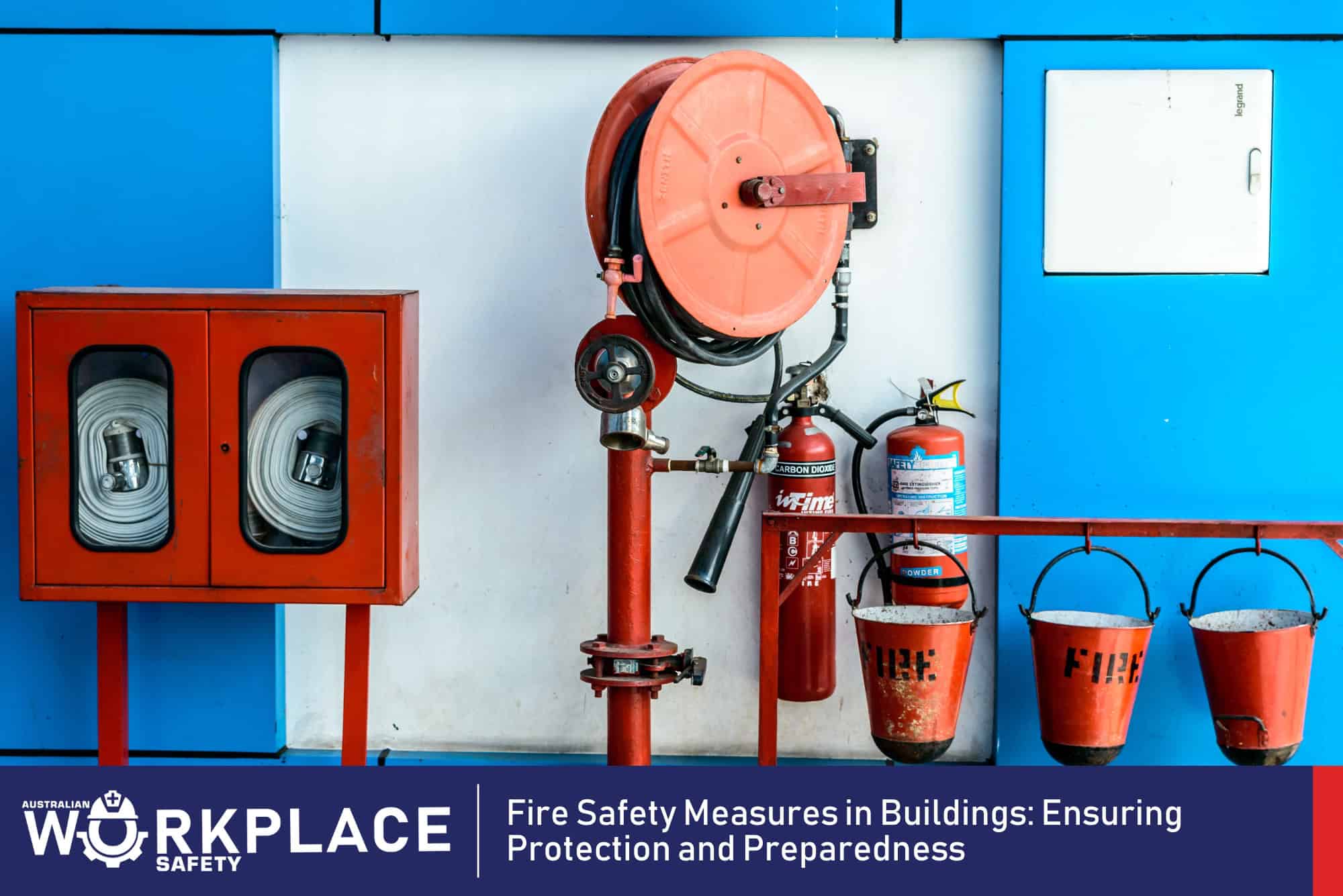Ensuring a safe work environment is paramount in every workplace across Australia. By implementing effective safety practices, employers can protect their employees, minimise accidents and injuries, and create a culture of safety. In this blog, we will discuss the top 10 safety practices for Australian workplaces that can help employers promote a safe and healthy working environment.
Conduct regular risk assessments
Regular risk assessments are crucial for identifying potential hazards in the workplace. By identifying and evaluating risks, employers can take appropriate measures to eliminate or minimise them. Engaging employees in this process can help gather valuable insights and improve safety measures.
Provide adequate training
Proper training is essential to ensure that employees are equipped with the knowledge and skills necessary to carry out their duties safely. Conduct regular training sessions on safety protocols, equipment handling, emergency procedures, and hazard recognition. Ongoing education and refresher courses will help reinforce safety practices.
Promote open communication
Encourage open communication between management and employees regarding safety concerns. Establish channels for reporting hazards, incidents, and near-miss occurrences. Create a culture where employees feel comfortable voicing their concerns and suggestions for improvement. Regular safety meetings and toolbox talks can also facilitate communication.
Implement effective housekeeping
Maintaining a clean and organised workplace is vital for safety. Regularly inspect and clean the premises to remove clutter, spills, and other potential hazards. Promote good housekeeping practices among employees, including proper storage of materials and tools, regular equipment maintenance, and clear labelling of hazardous substances.
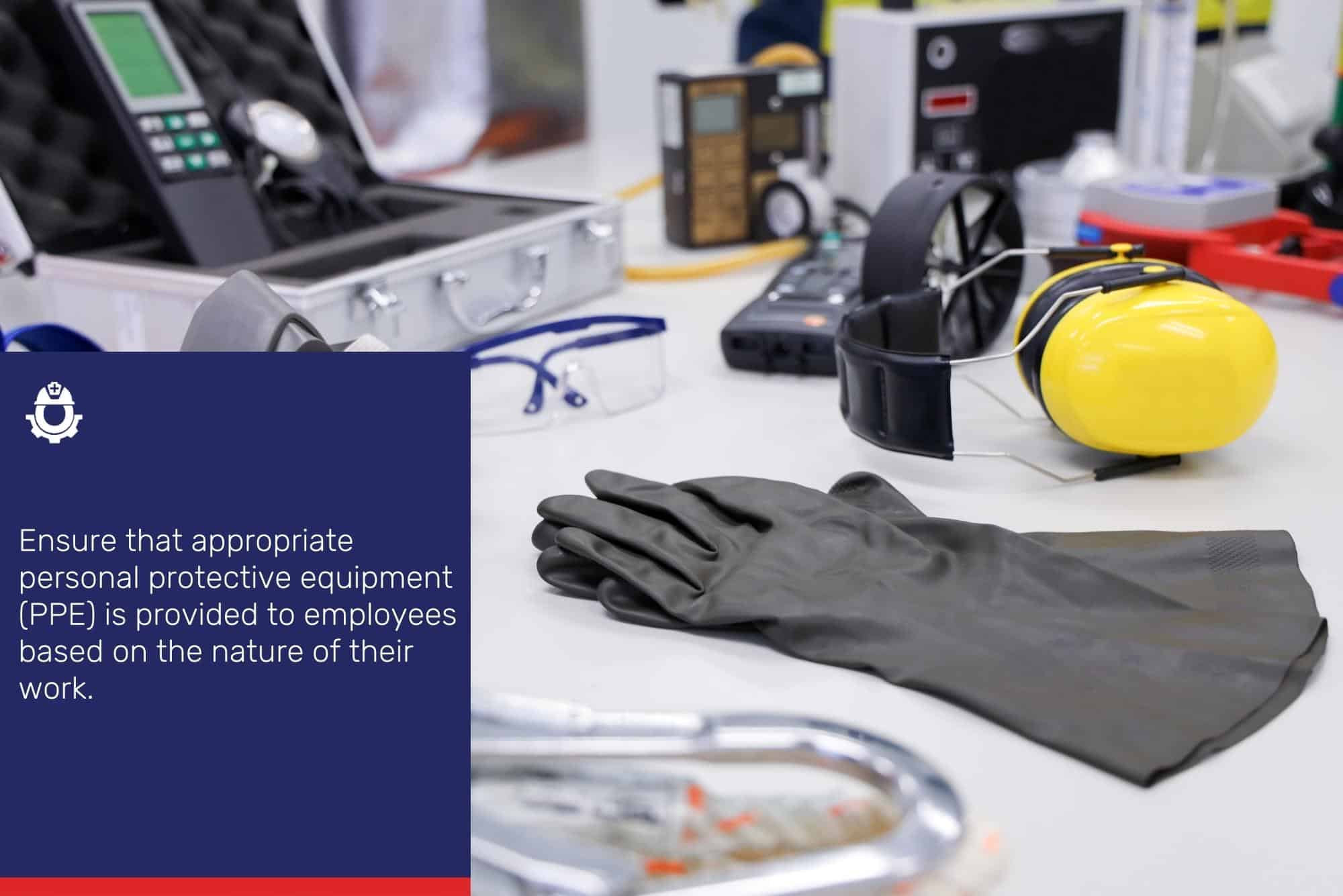
Provide Personal Protective Equipment (PPE)
Ensure that appropriate personal protective equipment (PPE) is provided to employees based on the nature of their work. Conduct assessments to determine the required PPE, and regularly inspect and replace damaged or worn-out equipment. Train employees on the proper usage, care, and maintenance of PPE.
Encourage ergonomic practices
Promote ergonomic practices to prevent musculoskeletal disorders and other work-related injuries. Ensure that workstations are properly set up with ergonomic furniture and equipment. Provide training on proper posture, lifting techniques, and stretching exercises. Encourage regular breaks and provide adjustable seating options.
Establish emergency response procedures
Develop and communicate clear emergency response procedures to all employees. Conduct regular drills to familiarise employees with evacuation routes, assembly points, and emergency contacts. Keep emergency equipment, such as fire extinguishers and first aid kits, easily accessible and regularly maintained.
Implement a fatigue management program
Fatigue can significantly impact employee safety. Establish policies and procedures to manage fatigue in the workplace, especially for industries that involve shift work or long working hours. Encourage employees to prioritise sleep, provide break areas, and implement rostering practices that allow for sufficient rest periods.
Monitor and control workplace hazards
Regularly monitor and control workplace hazards to maintain a safe environment. Implement engineering controls, such as ventilation systems, machine guards, and noise reduction measures. Develop procedures for the safe handling, storage, and disposal of hazardous substances. Conduct regular inspections and audits to identify and address potential hazards.
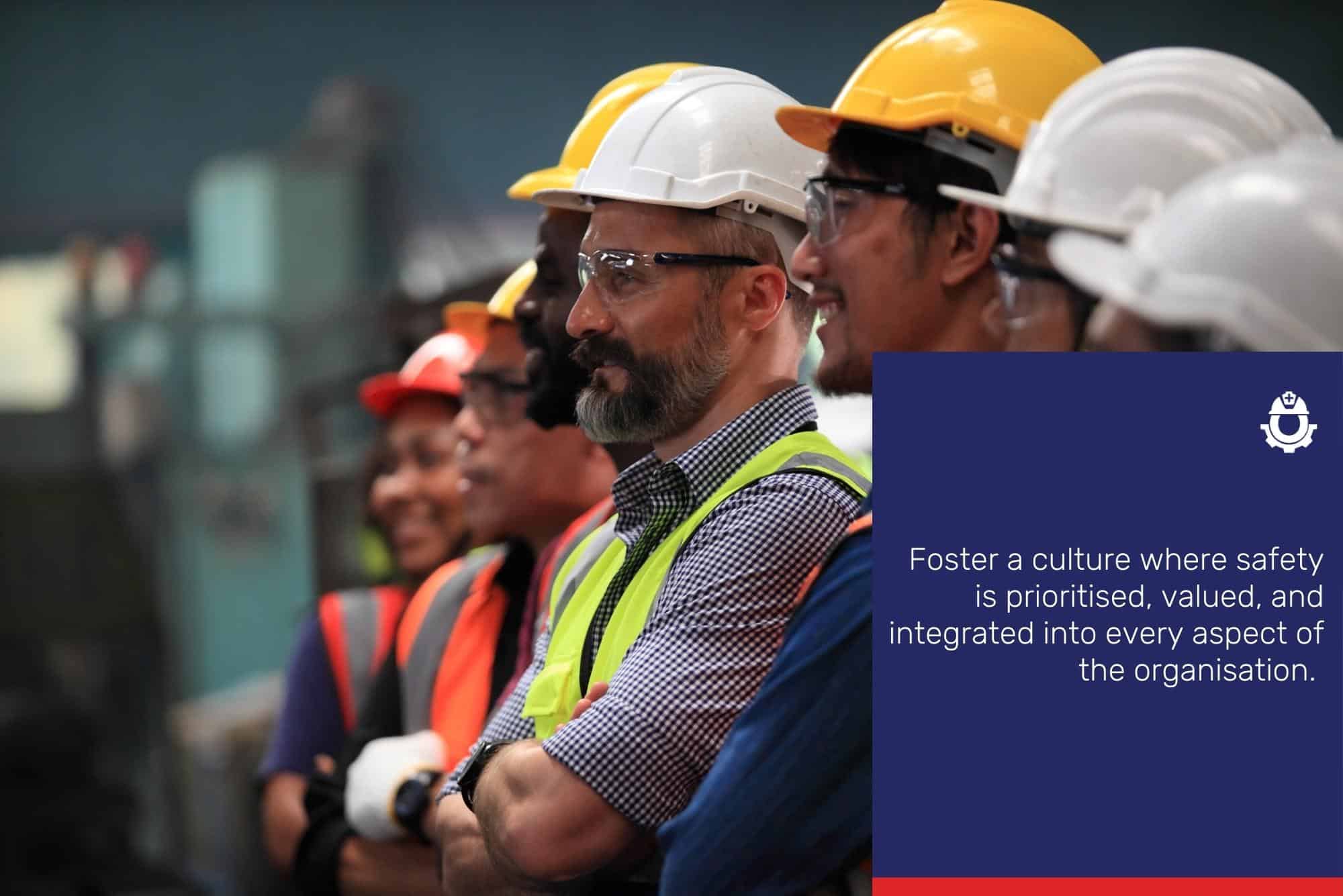
Foster a safety culture
Ultimately, creating a safety culture is essential for long-term success. Foster a culture where safety is prioritised, valued, and integrated into every aspect of the organisation. Recognise and reward employees who demonstrate exemplary safety practices. Provide ongoing safety training and encourage employees to actively participate in safety initiatives.
Australian workplaces can foster a safe and healthy
By implementing these top 10 safety practices, Australian workplaces can foster a safe and healthy environment for employees. Prioritising risk assessments, training, communication, and emergency preparedness will lead to reduced accidents, increased productivity, and enhanced employee morale. Remember, safety should always be at the forefront of every workplace to protect and care.
Disclaimer: The information provided in this blog is intended for general informational purposes only. The safety practices outlined are based on general principles and may not address specific workplace conditions or legal requirements. It is important for employers and employees to consult with relevant occupational health and safety authorities, legal professionals, and industry-specific guidelines to ensure compliance with applicable laws and regulations. Every workplace is unique, and safety practices should be tailored to specific circumstances and risks. The author and publisher of this blog are not liable for any damages or losses that may arise from the use or implementation of the information provide.
